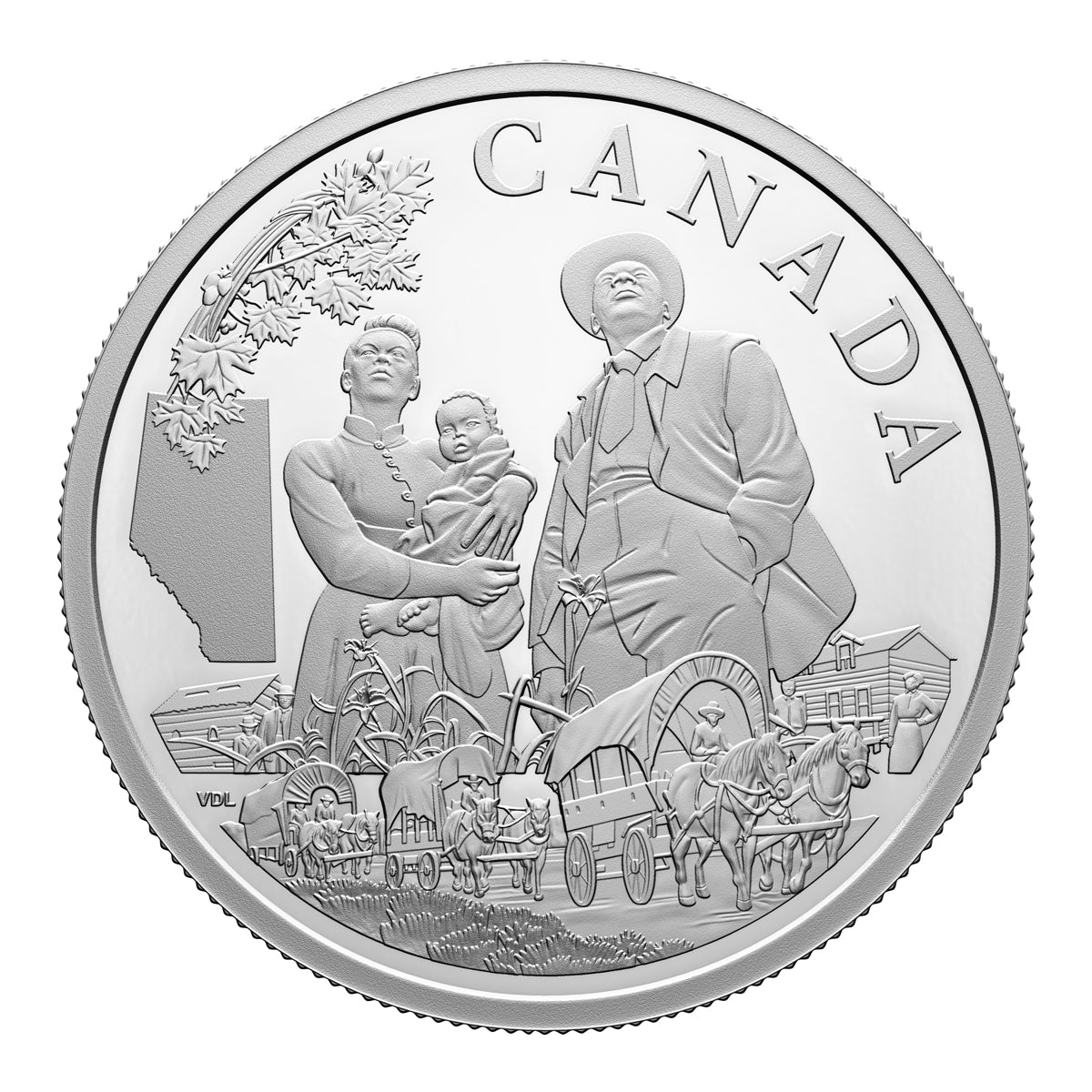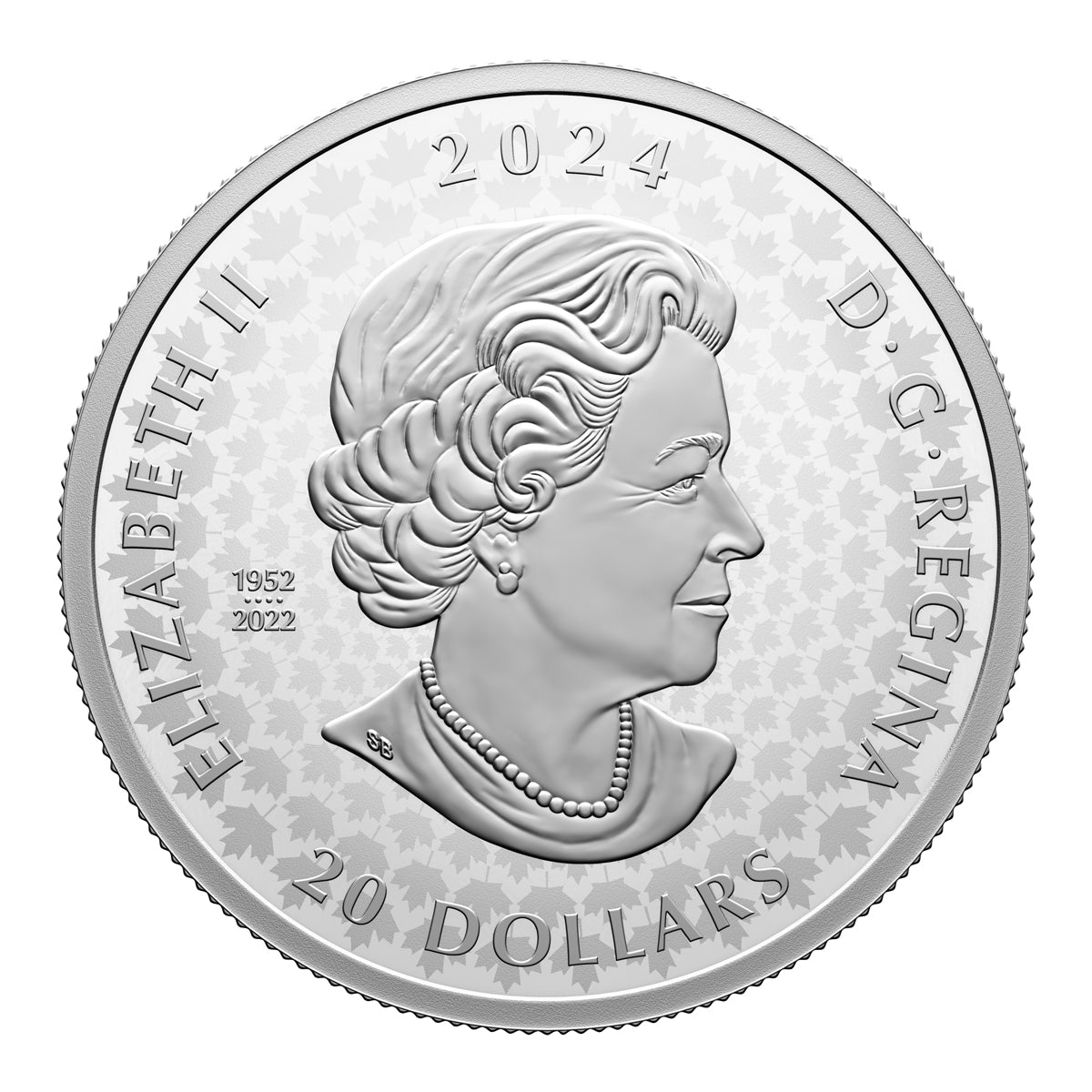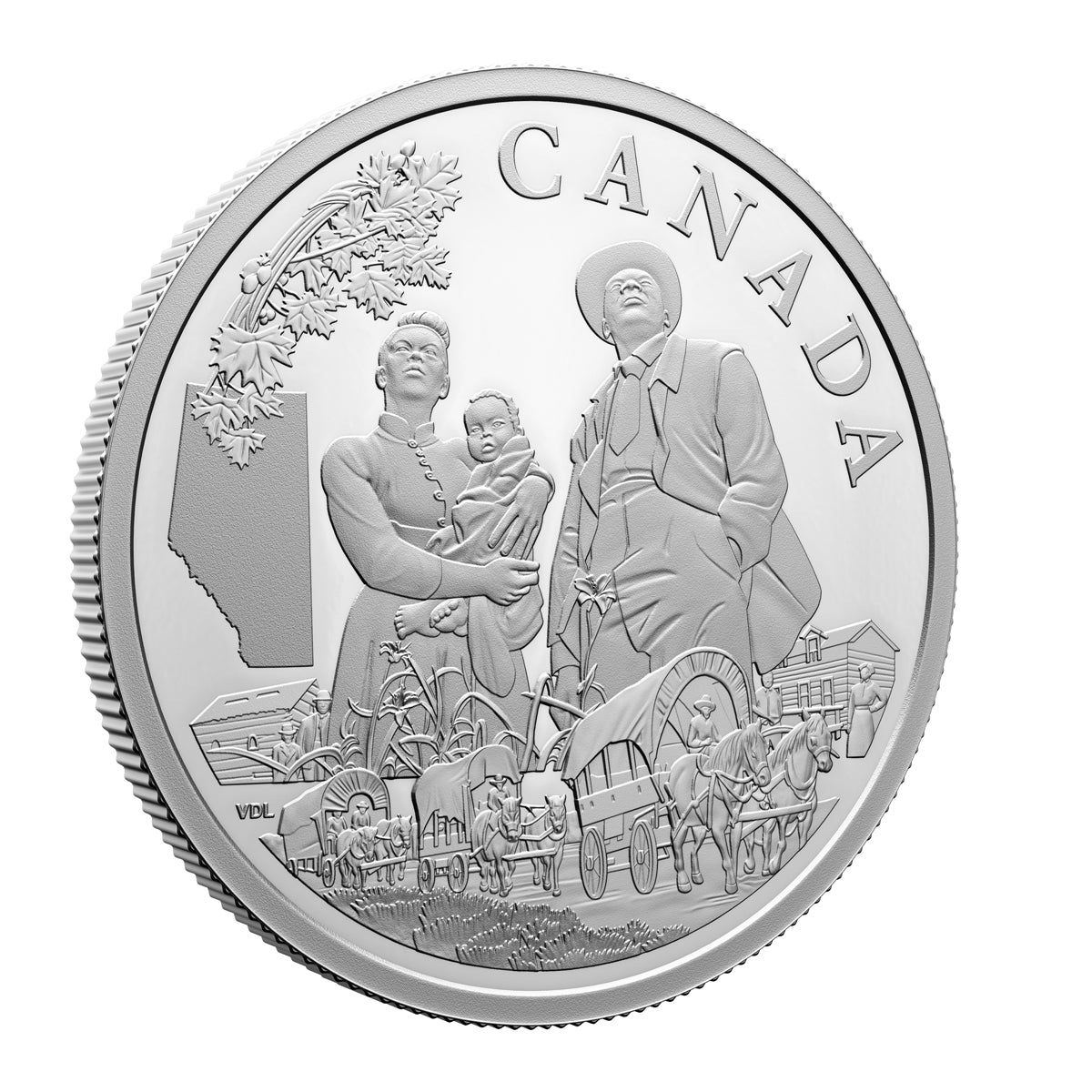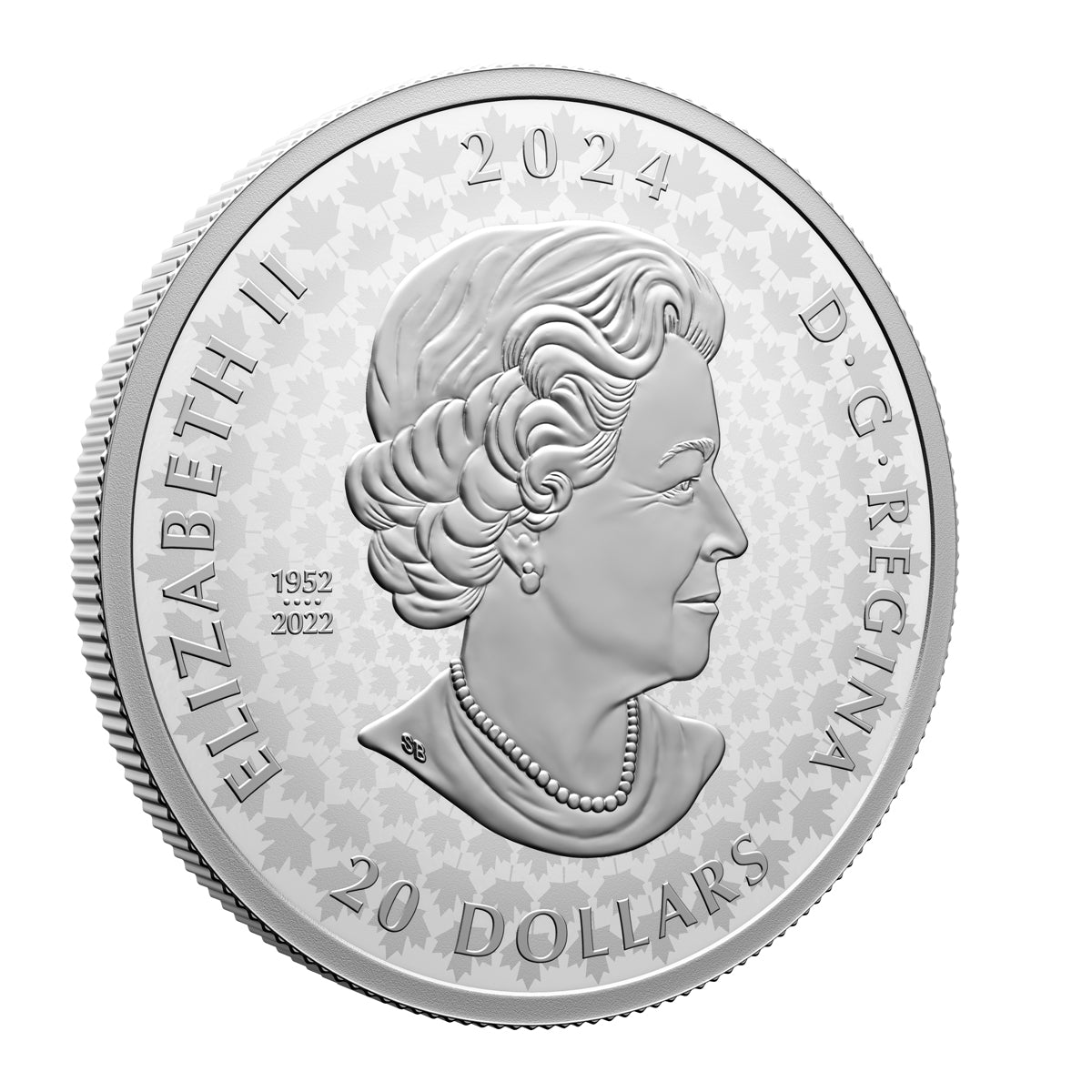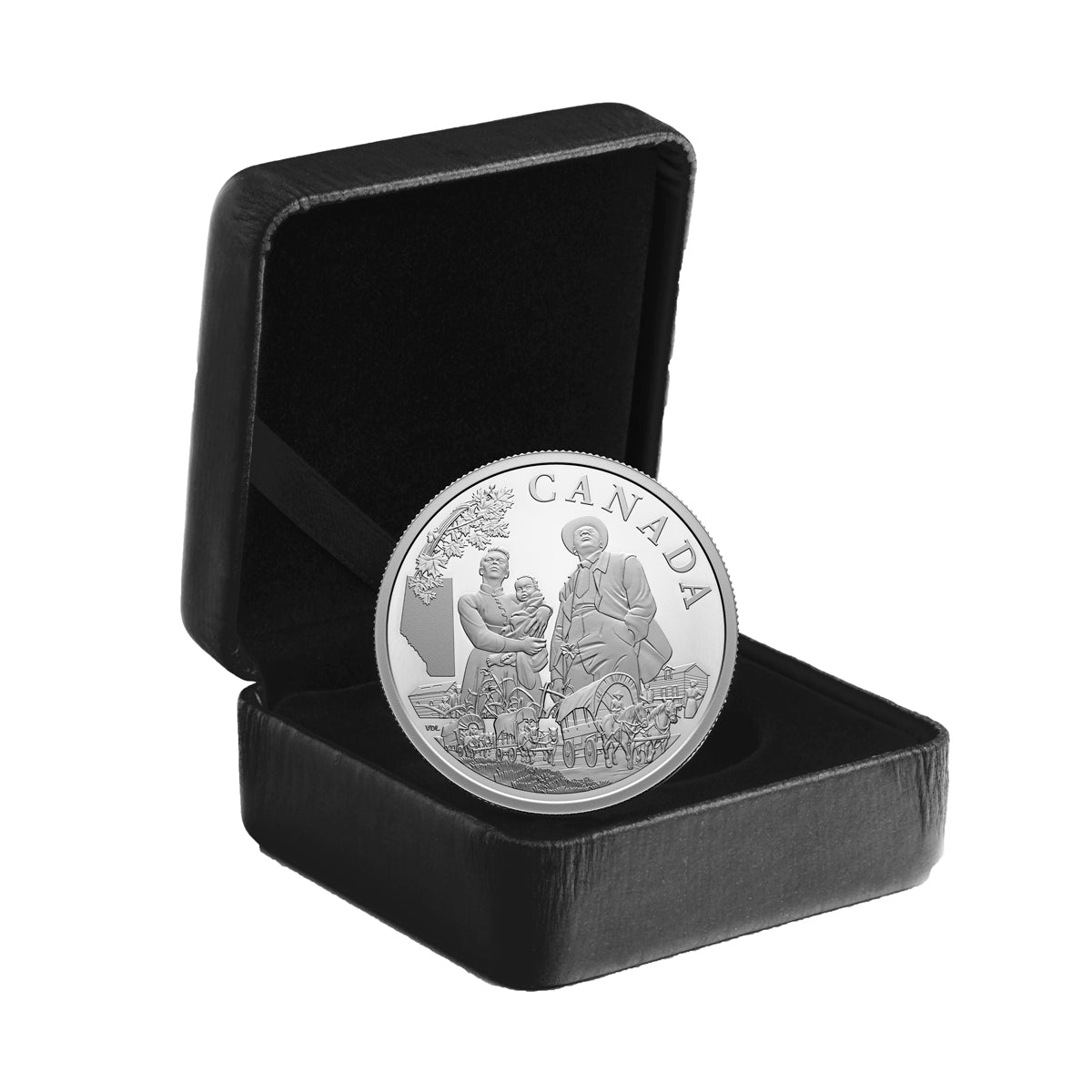Description
The 2024 Commemorating Black History coin brings to life an often-overlooked story from Canada’s immigration history. Its finely engraved reverse captures the spirit of Amber Valley—one of the largest Black settlements in western Canada during the early 20th century—and honours the Black pioneers who persevered through hardships and hostility, facing down discrimination and building up a foundation for future generations.
Most of those who settled in Amber Valley sought to escape escalating racial violence and segregation in the southern United States. Seizing on the Canadian government’s promises of cheap land, founding families made the trek north in 1910, crossing the border and boarding a train bound for Edmonton, then travelling by wagon train to Pine Creek, where they set out to convert the land and build a community from the ground up.
The first wave of Black settlers endured harsh weather, long days of clearing land that had been rejected by European homesteaders, and racial hostilities that led to the active discouragement of Black immigration to Canada by 1912. Still, the residents of Pine Creek—re-named Amber Valley in 1931—persevered and Canada’s northernmost all-Black community thrived, its population peaking at 300 residents.
The bustling community gradually went into decline after the Second World War, as residents moved to larger urban centres to find work. Its school closed in the 1950s and the post office was shut down in 1968; today, only a few weathered buildings remain, but the memory and spirit of Amber Valley endure. HST/GST exempt.
The Design:
Designed by Canadian artist Valentine De Landro, your coin’s reverse highlights the rich history of Amber Valley, one of the largest all-Black settlements in western Canada in the early 20th century. The design is centred on a family portrait that represents the spiritual heart of the story: the Black homesteaders who founded Amber Valley (formerly Pine Creek) in 1909 and built a thriving community. Enhanced with flourishes inspired by ads promoting western settlement, the map outline of the province of Alberta provides geographical context, while beneath the settlers, the buildings form an artistic representation of Amber Valley. Along the bottom of the coin design is a depiction of a wagon train making its way across the rugged terrain of northern Alberta—a representation of the settlers’ pioneering spirit and resilience, and of their long journey north. The obverse features a maple leaf pattern and the effigy of Queen Elizabeth II by Susanna Blunt. The obverse also bears a special marking that includes four pearls symbolizing the four effigies that have graced Canadian coins and the double date of her reign.

